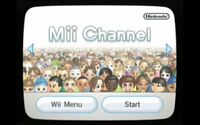Difference between revisions of "Wii"
PanchamBro (talk | contribs) |
Dorsal Axe (talk | contribs) (Pre-emptively updating table formatting in preparation for new classes) |
||
| Line 44: | Line 44: | ||
==''Animal Crossing''-related games== | ==''Animal Crossing''-related games== | ||
===Wii games=== | ===Wii games=== | ||
| − | {| class="styled" | + | {| class="styled color-system" style="text-align:center;" width="50%" |
|- | |- | ||
| − | ! width="15% | + | ! width="15%" | Game |
| − | ! width="10% | + | ! width="10%" | Image |
| − | ! width="20% | + | ! width="20%" | Release date(s) |
|- | |- | ||
| ''[[Super Smash Bros. Brawl]]'' || [[File:SSBB.jpg|100px]] || {{Flag|JPN}} January 31, 2008<br>{{Flag|USA}} March 9, 2008<br>{{Flag|AUS}} June 26, 2008<br>{{Flag|EUR}} June 27, 2008<br>{{Flag|KOR}} April 29, 2010 | | ''[[Super Smash Bros. Brawl]]'' || [[File:SSBB.jpg|100px]] || {{Flag|JPN}} January 31, 2008<br>{{Flag|USA}} March 9, 2008<br>{{Flag|AUS}} June 26, 2008<br>{{Flag|EUR}} June 27, 2008<br>{{Flag|KOR}} April 29, 2010 | ||
| Line 57: | Line 57: | ||
===Backwards compatibility=== | ===Backwards compatibility=== | ||
| − | {| class="styled" | + | {| class="styled color-system" style="text-align:center;" width="50%" |
|- | |- | ||
| − | ! width="15% | + | ! width="15%" | Game |
| − | ! width="10% | + | ! width="10%" | Image |
| − | ! width="20% | + | ! width="20%" | Release date(s) |
| − | ! width="20% | + | ! width="20%" | Available By |
|- | |- | ||
| ''[[Super Smash Bros. Melee]]'' || [[File:SSBM Box.jpg|100px]] || {{Flag|JPN}} November 21, 2001<br>{{Flag|USA}} December 3, 2001<br>{{Flag|EUR}} May 24, 2002<br>{{Flag|AUS}} May 31, 2002 || GameCube Disc | | ''[[Super Smash Bros. Melee]]'' || [[File:SSBM Box.jpg|100px]] || {{Flag|JPN}} November 21, 2001<br>{{Flag|USA}} December 3, 2001<br>{{Flag|EUR}} May 24, 2002<br>{{Flag|AUS}} May 31, 2002 || GameCube Disc | ||
Revision as of 16:53, March 16, 2021
|
| |||||||||||||||
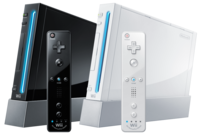 The two most common colors for the Wii | |||||||||||||||
Available colors:
| |||||||||||||||
| Manufacturer | Nintendo | ||||||||||||||
|---|---|---|---|---|---|---|---|---|---|---|---|---|---|---|---|
| Type | Home console | ||||||||||||||
| Release date(s) | |||||||||||||||
| Media | Wii Optical Disc, GameCube Game Disc, Digital distribution | ||||||||||||||
| Input |
| ||||||||||||||
| Predecessor | Nintendo GameCube | ||||||||||||||
| Successor | Wii U | ||||||||||||||
The Wii is Nintendo's fifth home gaming console and competed with the Xbox 360 and the Sony PlayStation 3 in the seventh generation of video games. The original model was first released in late 2006 and produced until 2013. Two redesigned models, the "Wii Family Edition" and "Wii Mini", were released later, the latter of which is still available in some countries. The main input for the console is the controller, called the Wii Remote, which has motion and tilt sensitivity, and a plug for control extensions on the bottom. The console has an installment in the Animal Crossing series, titled Animal Crossing: City Folk, released on November 16, 2008 in the United States and on December 5 for PAL regions.
Controllers
The Wii has various methods of inputting commands like the Wii Remote, Nunchuk, Classic Controller, and the GameCube (GCN) controller. Most games that have recently been released are supporting these functions by giving the player optional input method like Wii Remote turned on its side.
Special controllers have been released for this console, like the Wii Balance Board, primarity used for the best-selling Wii Fit. The Wii Wheel is a plastic shell that came with Mario Kart Wii that allows the Wii Remote to sit in comfortably and provides the player with a better gaming experience. The Wii Zapper came with Link's Crossbow Training and is primarily used for first-person shooters such as Resident Evil 4. The Wii MotionPlus, the latest controller, was released in June 2009 and was included with Wii Sports Resort. The MotionPlus offers true 1:1 control. It is now built inside the Wii Remote (renamed Wii Remote Plus due to this).
Channels
Mii Channel
The Mii Channel is one of the preinstalled channels for the Wii. It is based on a Japanese game. It was released in North America on November 9, 2006, in Japan on December 2, 2006, in Australia on December 7, 2006, and in Europe on December 8, 2006. On the Mii Channel, players can create Miis, virtual characters that can represent them on various games. One of these games is Animal Crossing: City Folk, where players can get a Mii Mask at Shampoodle by selecting "Makeover." The first makeover is free, while any more after that cost 3,000 Bells.
Nintendo Channel
The Nintendo Channel was another channel for the Wii console. It gave players updates on new games and videos. In the City Folk section there were videos to help keep track of current Animal Crossing news. The Nintendo Channel ceased functioning on June 28, 2013, due to the disconnection of WiiConnect24.
Wii games
| Game | Image | Release date(s) |
|---|---|---|
| Super Smash Bros. Brawl | 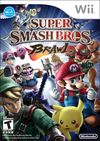 |
|
| Animal Crossing: City Folk | 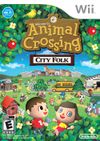 |
Backwards compatibility
| Game | Image | Release date(s) | Available By |
|---|---|---|---|
| Super Smash Bros. Melee | 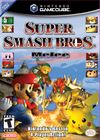 |
GameCube Disc | |
| Animal Crossing | 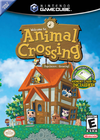 |
GameCube Disc | |
| Doubutsu no Mori e+ |  |
GameCube Disc |
| Nintendo video game consoles | ||||||||||||||
|---|---|---|---|---|---|---|---|---|---|---|---|---|---|---|
| ||||||||||||||
